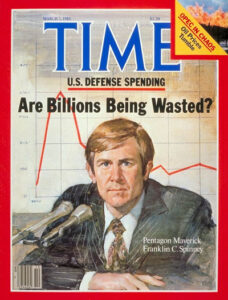Charles E. Hansen: A Visionary at the Intersection of Technology, Economics, and Love
 Charles E. Hansen was a pioneering researcher, author, and thought leader whose work explored the intricate relationships between technology, economics, and human connection. Best known for his book Technology of Love, Hansen brought a systems-based approach to understanding love—not merely as an emotion but as a fundamental force that shapes societies, economies, and technological advancements. With a background spanning engineering, business, and economics, he merged analytical rigor with a deep curiosity about the unseen forces driving human cooperation and progress. His unique, analytical perspective brought a new approach to a subject often left to philosophy and spirituality, making his work both groundbreaking and thought-provoking.
Charles E. Hansen was a pioneering researcher, author, and thought leader whose work explored the intricate relationships between technology, economics, and human connection. Best known for his book Technology of Love, Hansen brought a systems-based approach to understanding love—not merely as an emotion but as a fundamental force that shapes societies, economies, and technological advancements. With a background spanning engineering, business, and economics, he merged analytical rigor with a deep curiosity about the unseen forces driving human cooperation and progress. His unique, analytical perspective brought a new approach to a subject often left to philosophy and spirituality, making his work both groundbreaking and thought-provoking.
Charles sought to bridge the gap between science and the deeper, often intangible forces that drive human connection. His writings explored how love, as an energy, could be understood, harnessed, and even amplified using scientific principles, making his work a fascinating intersection of metaphysics and technology.
Hansen’s academic journey began at the University of Colorado, where he studied engineering and business, developing a keen understanding of both the technical and strategic aspects of innovation. Following his graduation, he served as an Air Force officer at Wright-Patterson Air Force Base in Dayton, Ohio, where he gained firsthand experience in systems analysis and technological development.

During this period, he earned his MBA from Wright State University, refining his expertise in economic structures, organizational efficiency, and strategic planning. These early experiences laid the foundation for his later work, which sought to uncover the hidden patterns behind technological and economic success.
From 1971 to 1977, while in the doctoral program for Economics at George Washington University, Hansen approached his research through the lens of systems theory. A National Science Foundation grant to the university’s Program for Policy Studies in Science and Technology funded his work, allowing him to investigate how major new technologies are developed and deployed within complex economic and political ecosystems. His research on the causes of successful economies revealed a crucial insight: human cooperation for mutual benefit was a key driver of economic growth. He observed that thriving economies were not simply the product of market forces or technological breakthroughs but were sustained by a culture of collaboration—where businesses, government entities, and individuals worked cooperatively at all levels to drive innovation and shared prosperity. This realization profoundly shaped his later work, as he began to see cooperation not just as an economic principle but as a deeper, fundamental force of human progress.
 Hansen’s expertise led him to International Business Services (IBS) in Washington, D.C., where he headed the Economic and Technology Development Division. In this role, he provided strategic guidance on technological and economic policy, advising key decision-makers on the long-term implications of emerging innovations. His work extended to the highest levels of government, including serving as a consultant to President Reagan’s Grace Commission on Cost Control for Defense, where he collaborated with Franklin C. Spinney to identify inefficiencies and cost-saving measures within the defense sector. Even while working within these high-level systems of power and policy, Hansen remained committed to a broader vision: understanding the deeper mechanisms that drive not just economies, but human relationships and societal well-being.
Hansen’s expertise led him to International Business Services (IBS) in Washington, D.C., where he headed the Economic and Technology Development Division. In this role, he provided strategic guidance on technological and economic policy, advising key decision-makers on the long-term implications of emerging innovations. His work extended to the highest levels of government, including serving as a consultant to President Reagan’s Grace Commission on Cost Control for Defense, where he collaborated with Franklin C. Spinney to identify inefficiencies and cost-saving measures within the defense sector. Even while working within these high-level systems of power and policy, Hansen remained committed to a broader vision: understanding the deeper mechanisms that drive not just economies, but human relationships and societal well-being.
This vision ultimately led to his most influential work, Technology of Love, in which he applied the same systems-based approach to the study of love as a transformative force. Just as cooperation was essential for economic success, he argued, love was the driving energy behind all meaningful human progress. Hansen saw love not just as a personal experience but as an underlying principle that could be understood, nurtured, and harnessed to shape a better world. His legacy continues to inspire those seeking to bridge the worlds of science, technology, and spirituality, proving that even in an age of rapid technological advancement, the most powerful and enduring force remains love itself.
